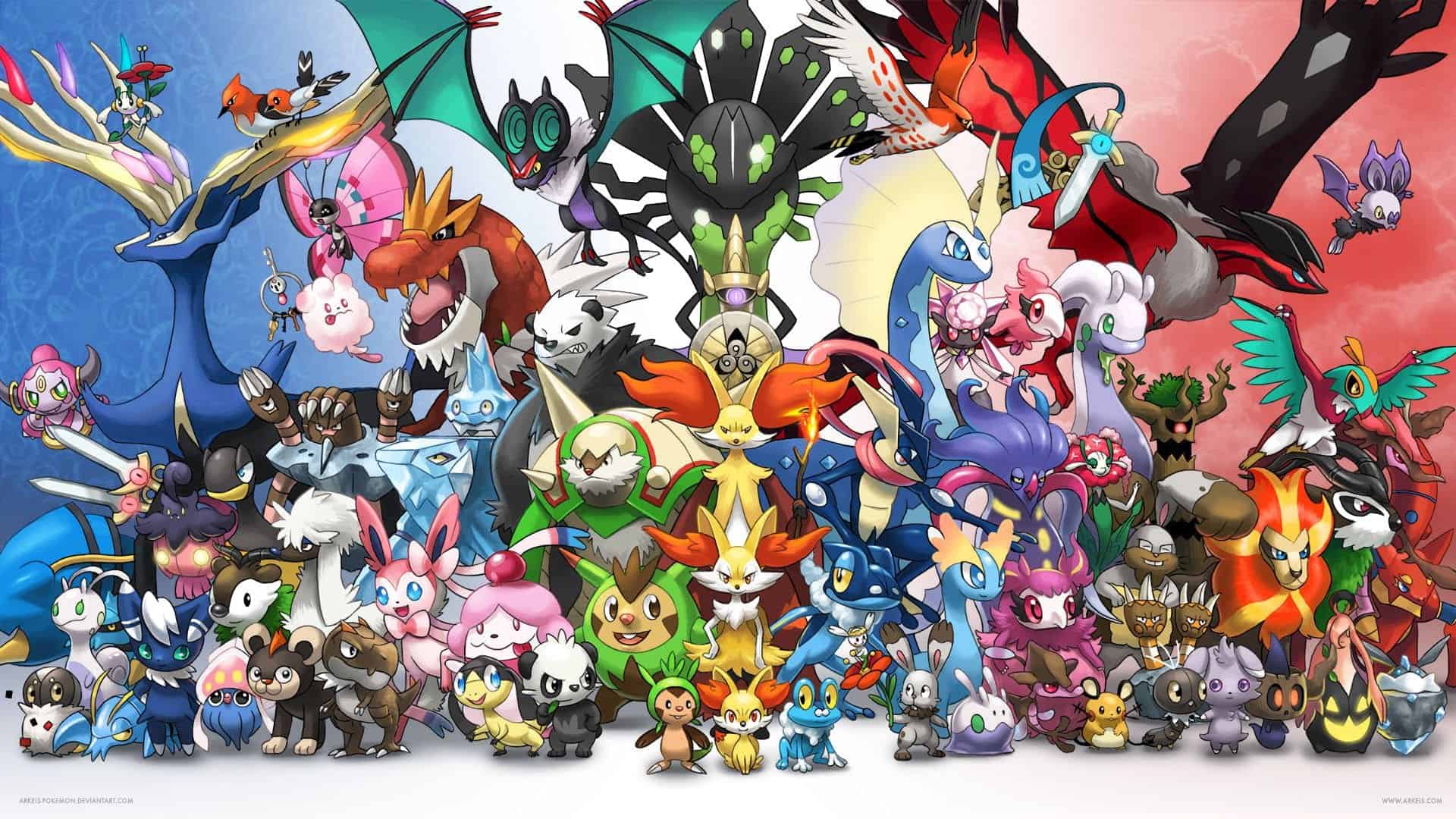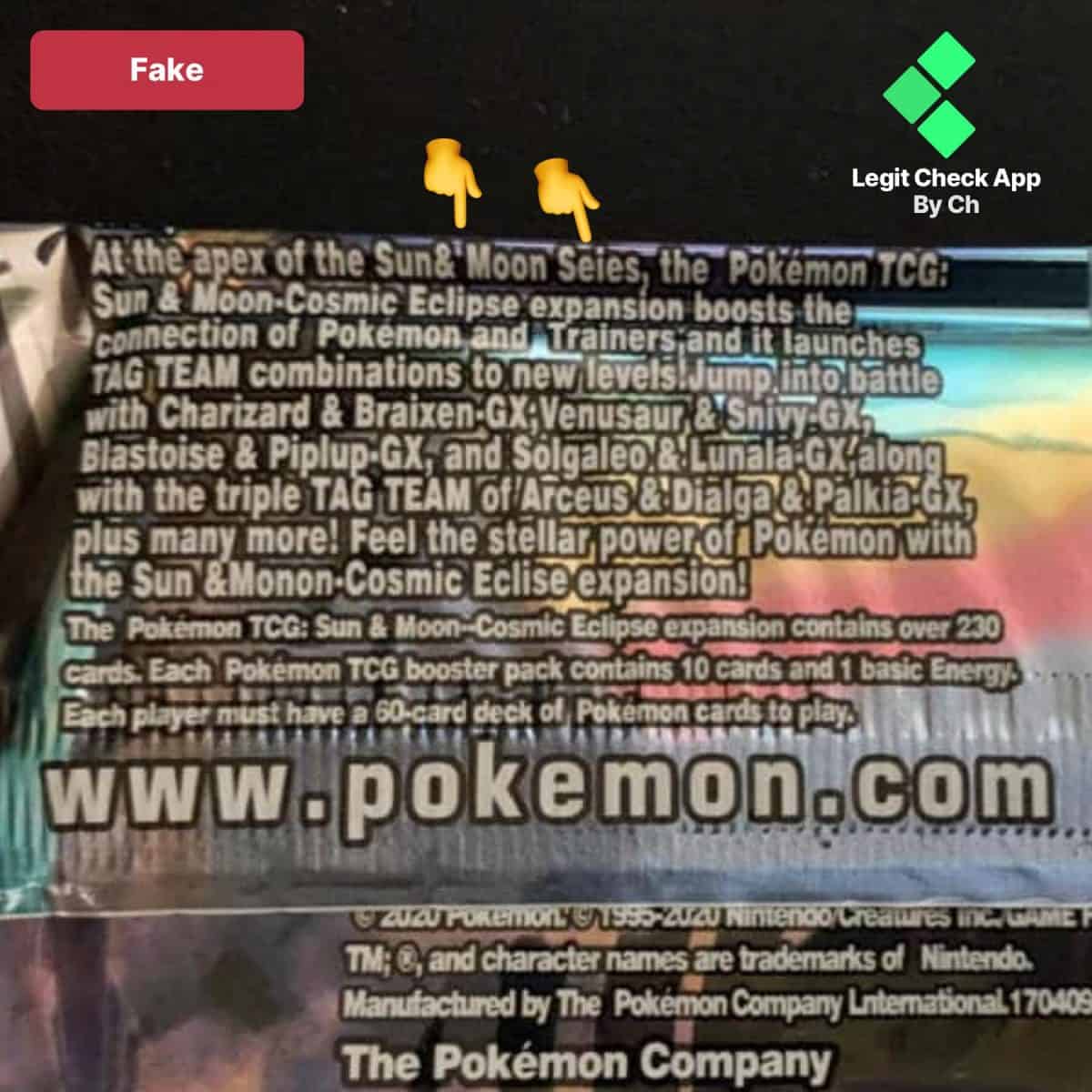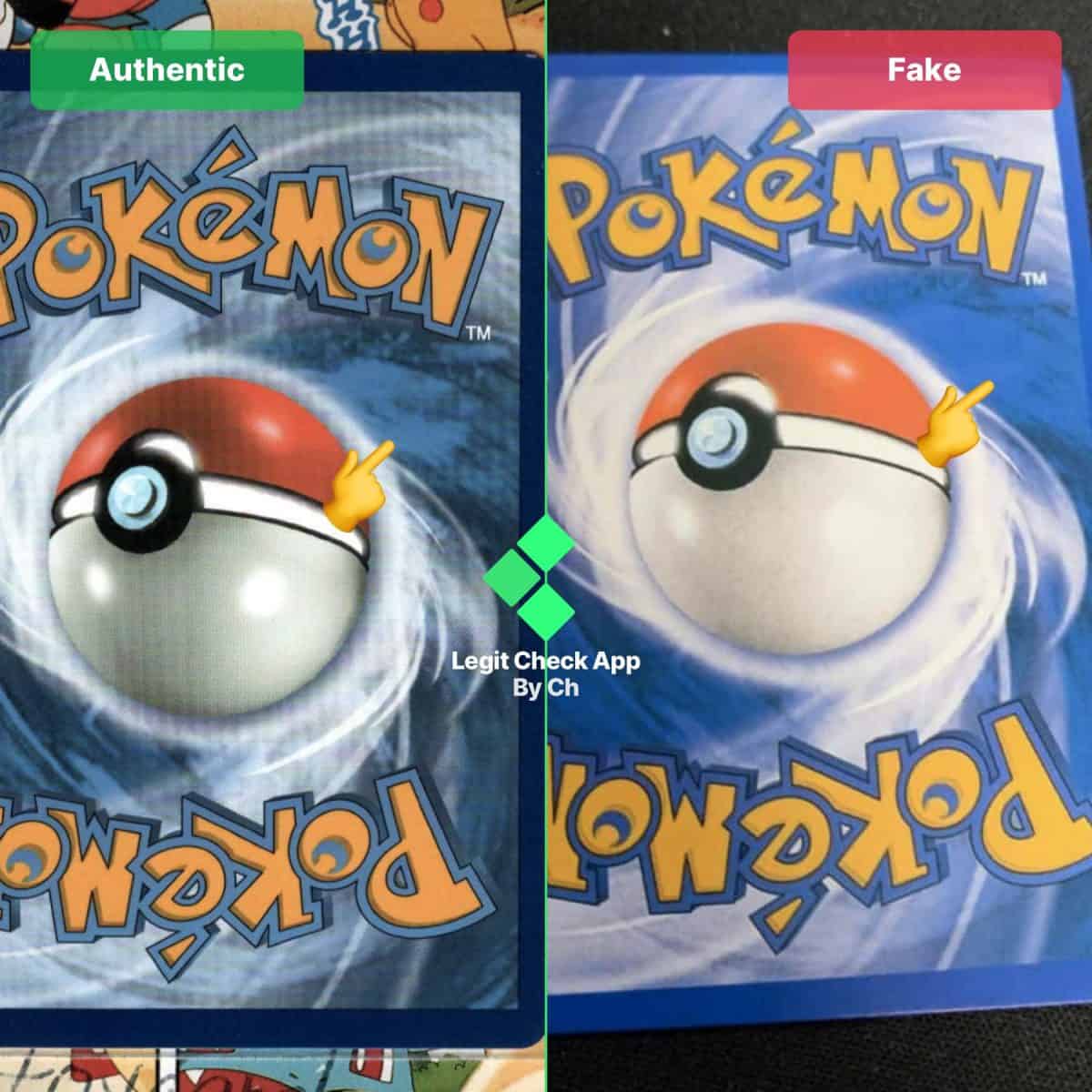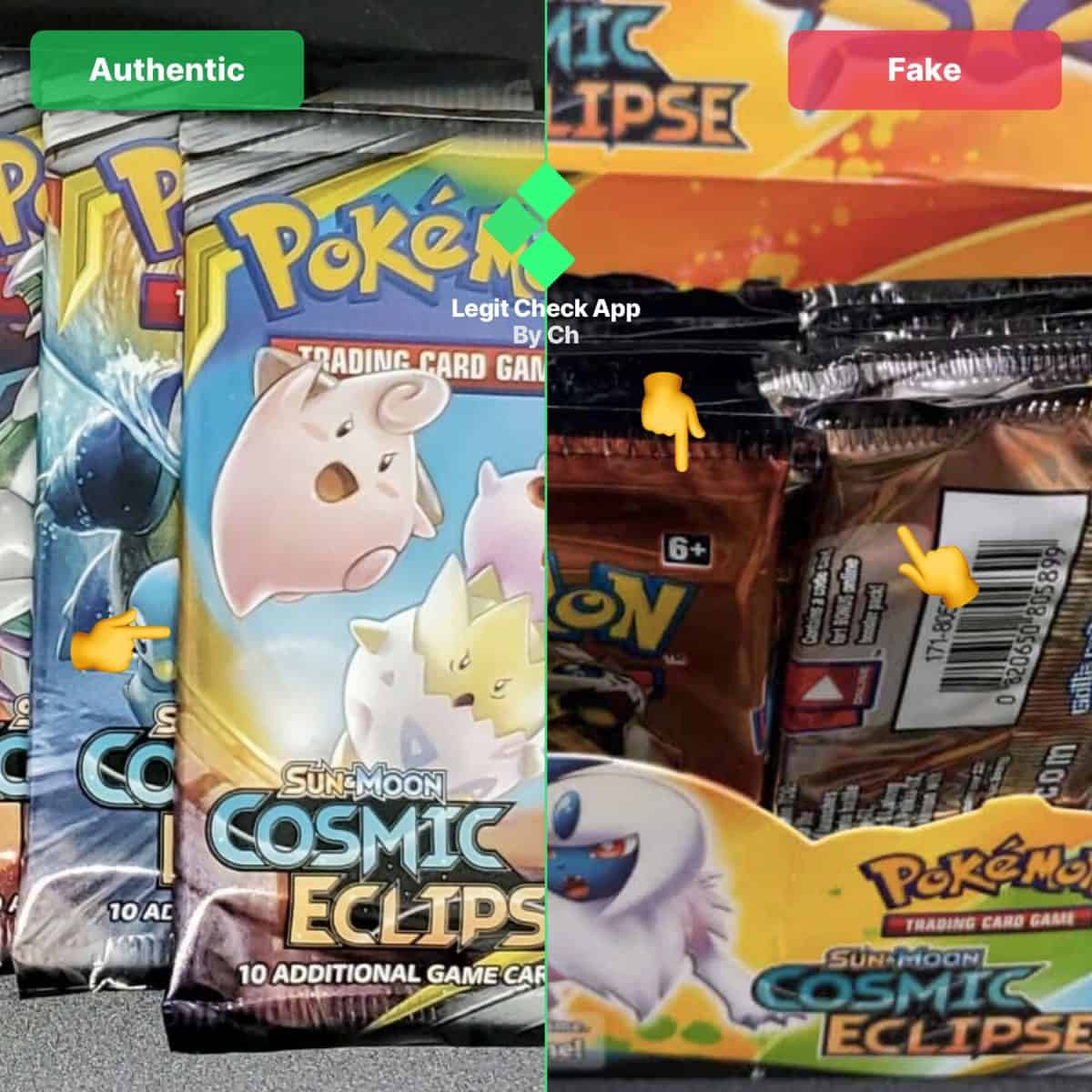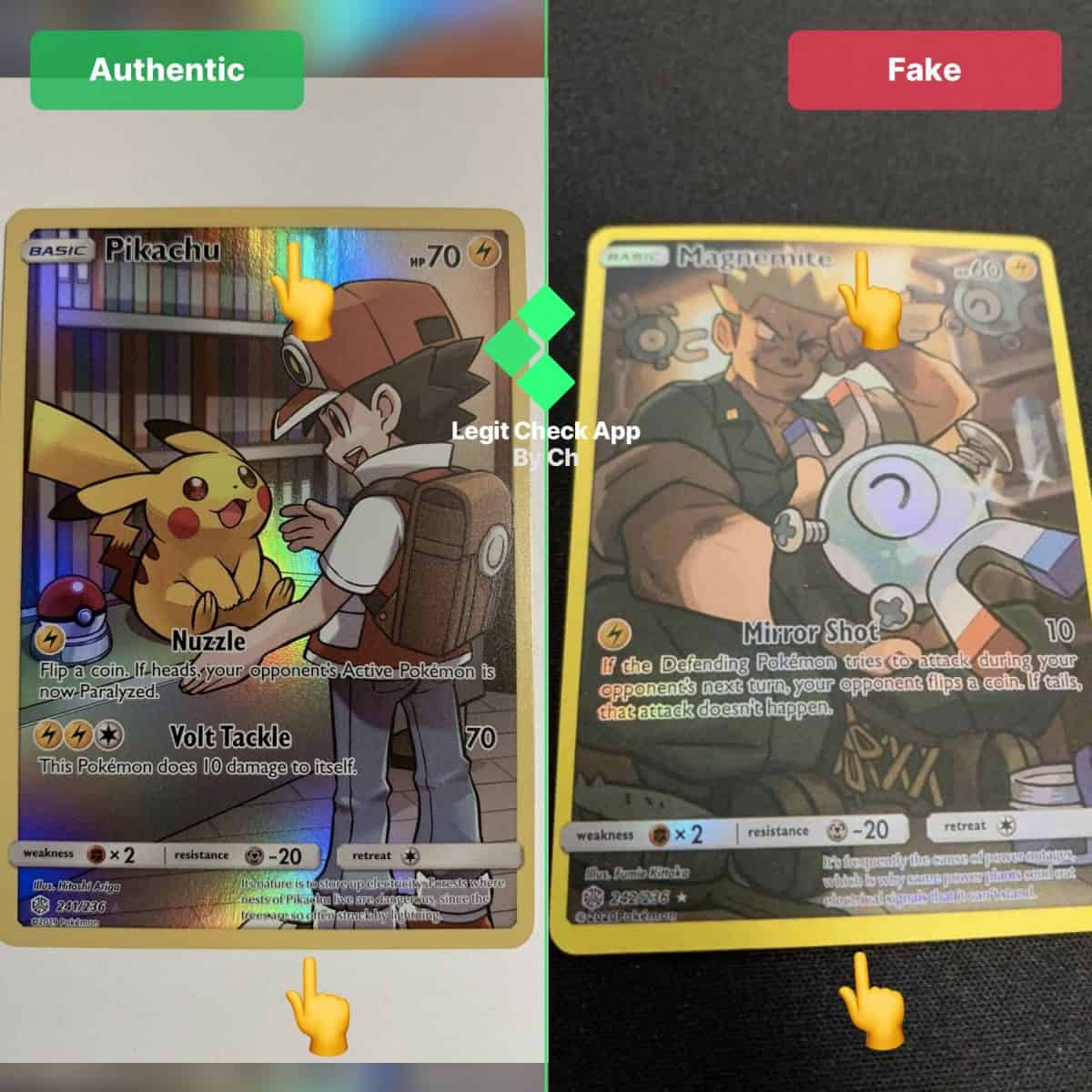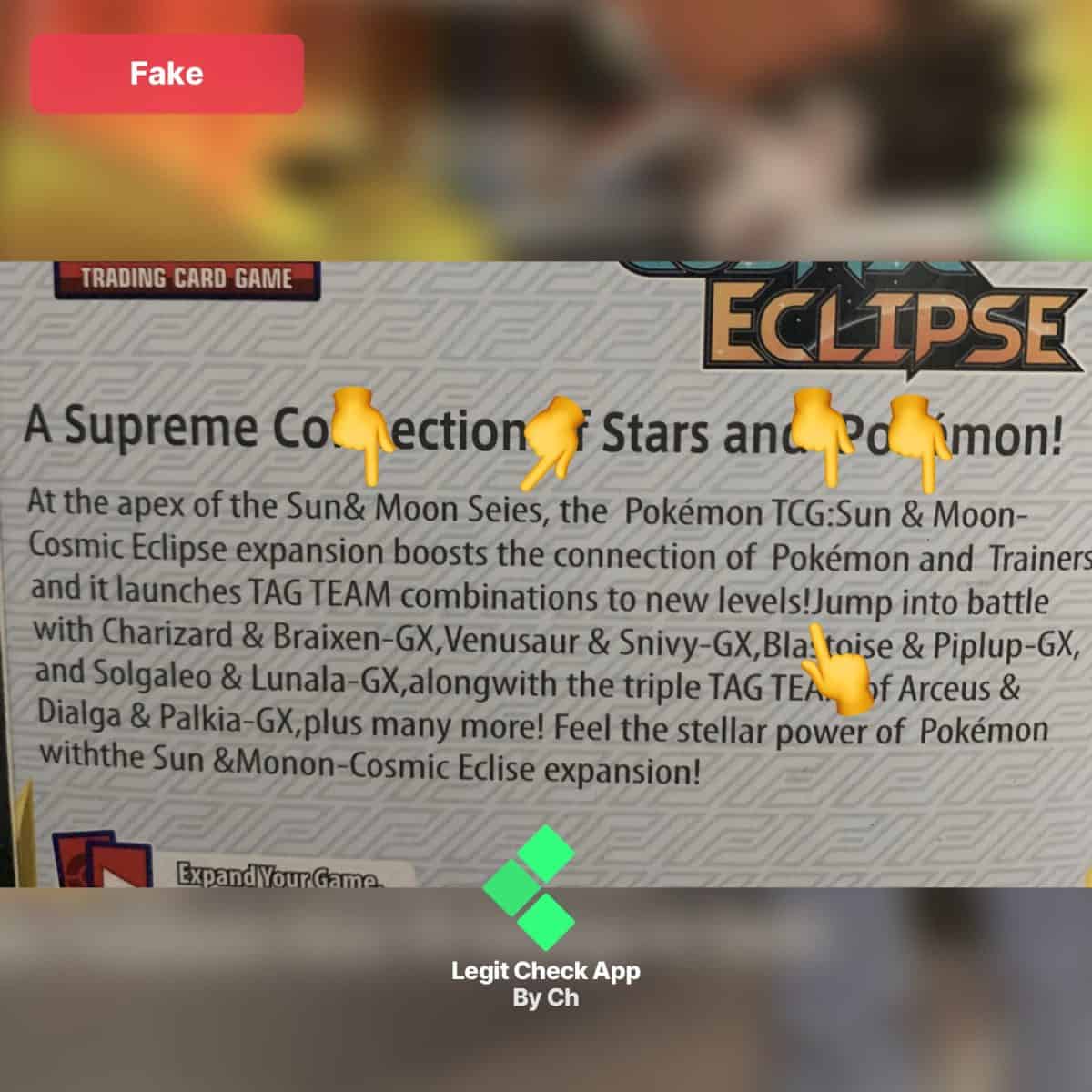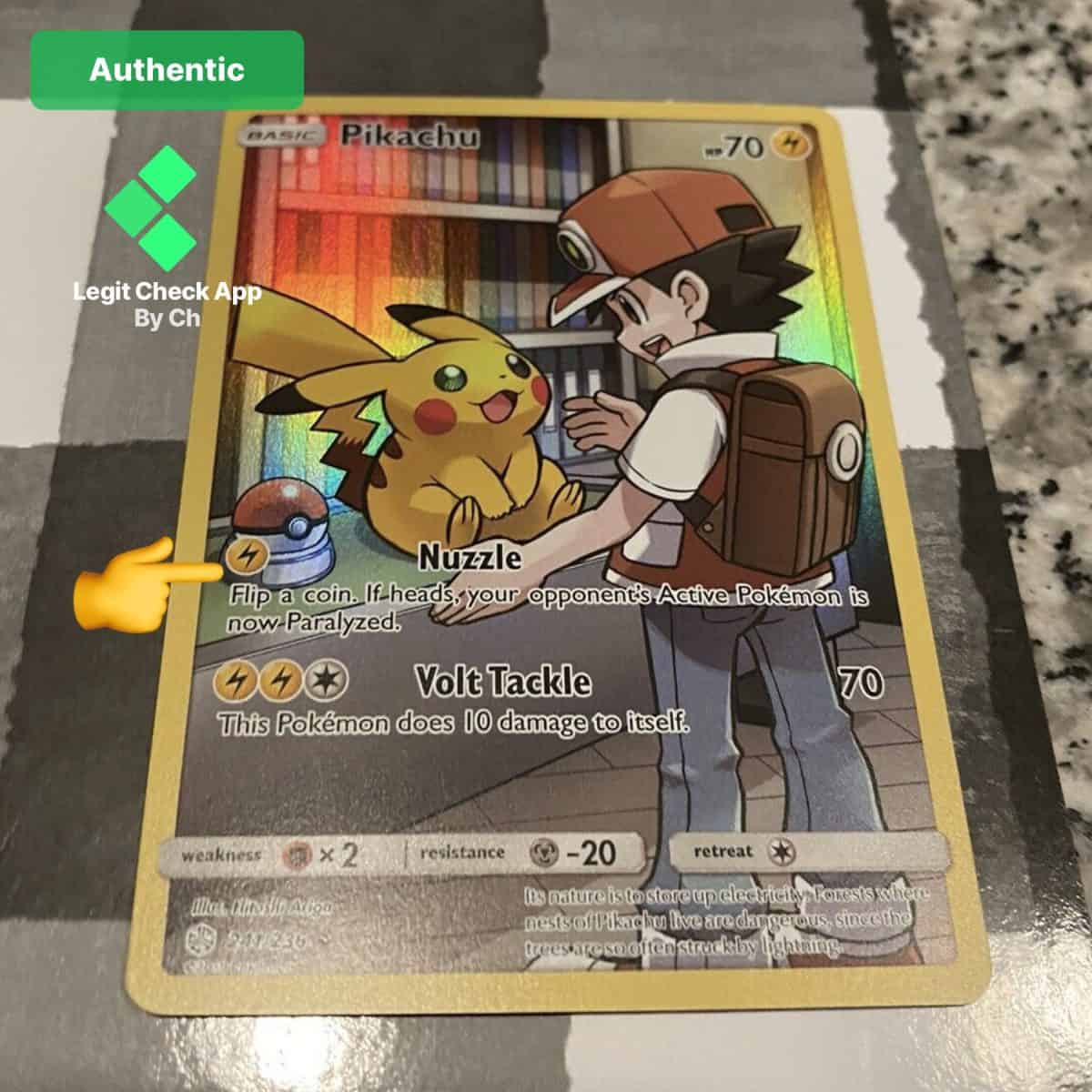Last Updated on January 9, 2024 by Ch David
With Pokémon being the most important media franchise in the world…
You might need to learn how to spot fake Pokémon cards
But you don’t know how to start
So you’re here to verify your TCG cards
Or get an expert Pokémon authentication
Our tutorial covers all of the above. You’re in good hands.
This guide works for any Pokémon card.
Let’s begin.
How to tell if Pokémon cards are fake
To tell if Pokémon cards are fake, examine the text and inscriptions on the cards and on all the packaging.
Fake cards often contain grammar errors and typos.
1. Typos
Example: We’re going to look at the foil of a Pokémon TCG card.However, you should look for typos all over the card(s) .
Authentic:
Consistent letter spacing.
Does not contain any typos or misspelled words.
Fake:
The “Sun & Moon” text has too much space between the ‘&’ symbol and the “Moon” text.
There is also a typo in the “Sun & Moon Series” text at the top, where it says “Seies” instead of “Series”
The “Sun & Moon” text at the bottom is mistyped as “Sun&Monon”
The word “International” is misspelled as “Lnternational”.
Too difficult? Let our team of expert Céline authenticators take a look at your card(s):2. Color
Let’s look at the front of the card.
This side is the same for +90% of the Pokémon cards.
So it will very likely apply to yours as well.
Authentic:
Darker and more varied blue shades.
The white side of the pokeball is less shiny, and the “POKEMON” text is orange.
Fake:
Improperly defined colors.
The blue color is too blurry, with only two shades of light blue.
The white side of the pokeball is overly shiny.
The “POKEMON” text is yellow instead of orange.
A quick mention:
The steps we’ve written so far are the BEST ways to authenticate this item The next few steps are still reliable methods… … but they apply to non-top-versions of replicas available for this item If in doubt, we recommend double-checking the steps we’ve explained above this line.
2. Packaging
We’ll look at how the cards are wrapped in the foil packaging.
Authentic:
Cards are tightly sealed inside the foil packaging.
With no air inside the bags.
Fake:
Cards are improperly sealed inside the foil packaging.
With a lot of air inside the bags , making the foil appear flimsy .
4. Border
This is for the yellow edge of your card.
Authentic: Narrower and shorter borders, both at the top and bottom.Fake: Slightly larger borders, especially in terms of height.
5. Box (Bundle)
We’ll now focus on the text at the bottom of the box.
This goes for bundles of multiple cards.
Authentic:
The box maintains proper kerning.
Correct spacing between characters and words.
Fake: Spacing flaws, with characters poorly positioned and varying amounts of space between them.
“Sun & Moon,” and “Seies” should be “Series” with the missing “r.”
Additionally, there’s a spacing issue with “levels! Jump.”
6. Bending
Although we can’t really picture this, we’ll tell you what happens when bending a card .
Authentic:
Cards are made from stronger materials and are harder to bend…
Requiring more pressure to do so.
Fake:
Cards are usually very easy to bend.
Similar to a piece of paper, due to lower-quality materials.
Shortlist: Scan Pokémon CardsIn summary, here’s a quick 60-second solution to authenticate your Pokémon cards:
Check the inscriptions on the foil packaging for spelling and kerning errors.Verify the color of the front side of the cards , ensuring they have the correct shades of blue and orange.Examine the seal inside the foil packaging ; fake cards often have too much air.Inspect the size of the yellow borders on the cards ; fake cards may have larger borders.Check for spelling and kerning flaws in the text at the bottom of the box.Try bending the cards ; if they bend too easily like paper, they are likely fake Pokémon cards.
This quick guide should help you identify counterfeit Pokémon cards more efficiently.
Expert Pokémon card authentication
If you’re still unsure about the authenticity of your Pokémon cards:
Provide us high-quality pictures of your cards.
We will analyze them and provide you with results and a report within 24 to 48 hours.
This service can help confirm whether your cards are real or fake.
That’s it for now.
Need our opinion on your item’s authenticity? It’s a service we provide .
Get a fully-detailed report for why you have a real or fake item. Takes less than 48 hours!
Alternatively, use our free resources: written guides and video tutorials .
Thank you for reading this,
Ch Daniel and Ch David
